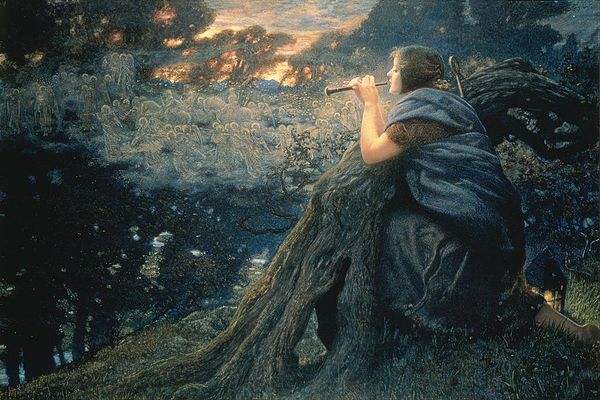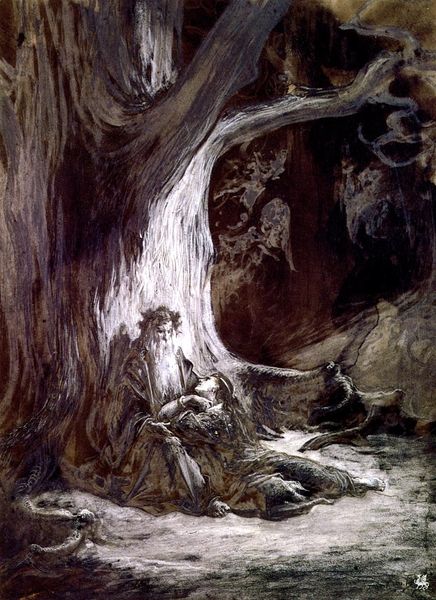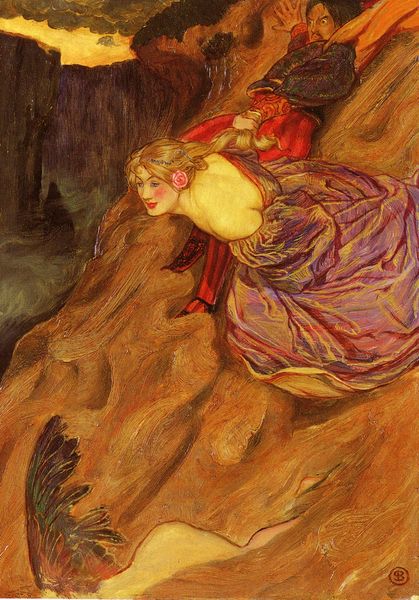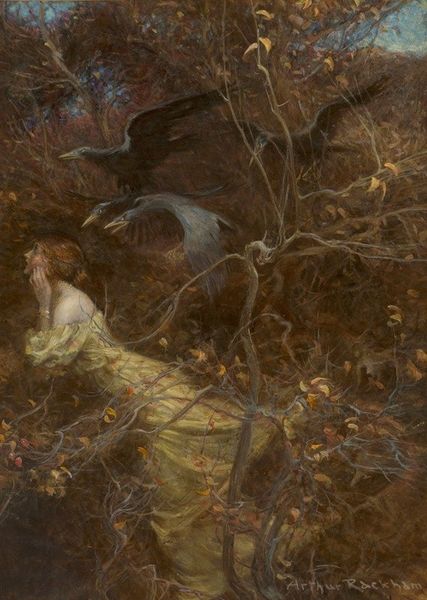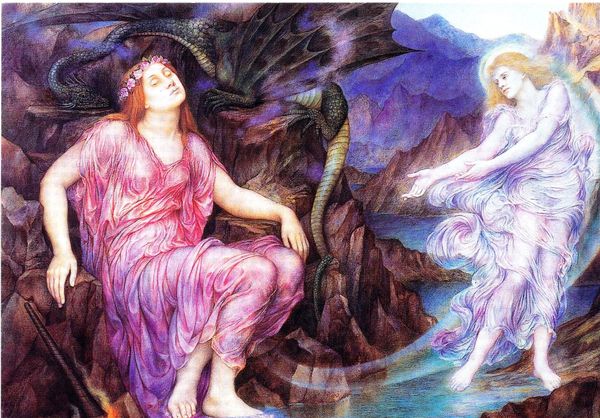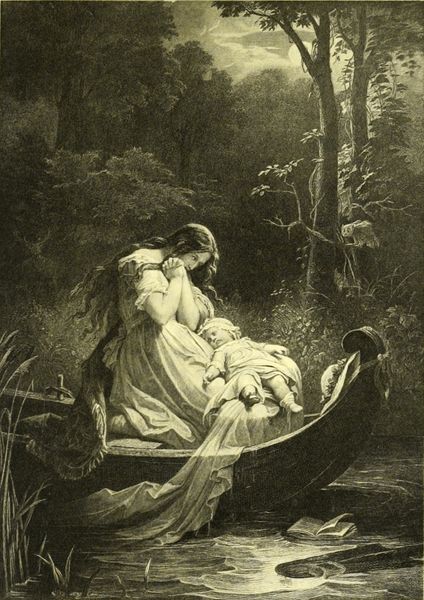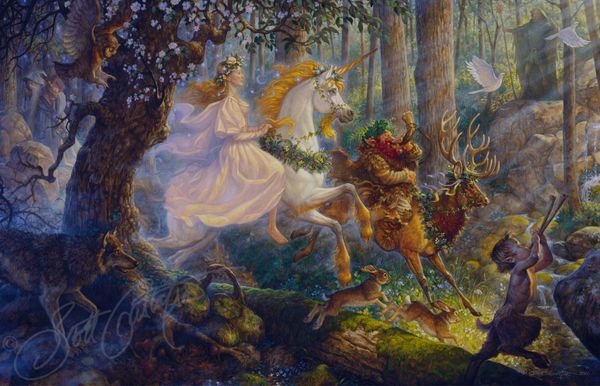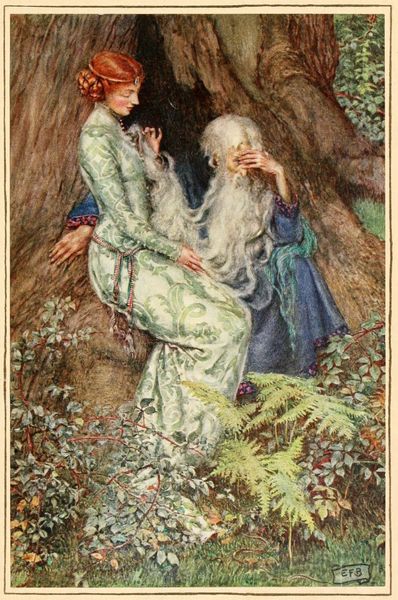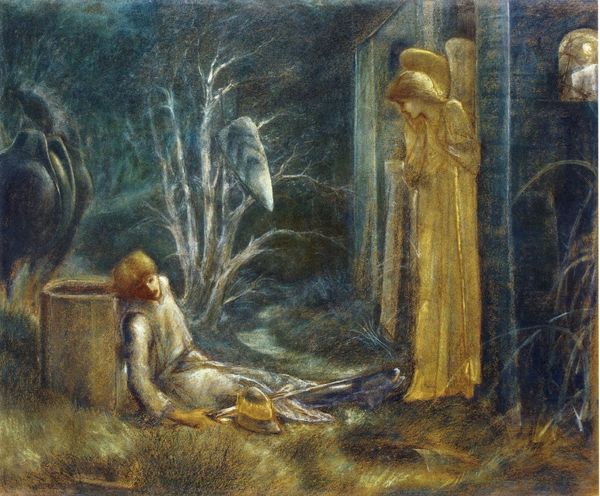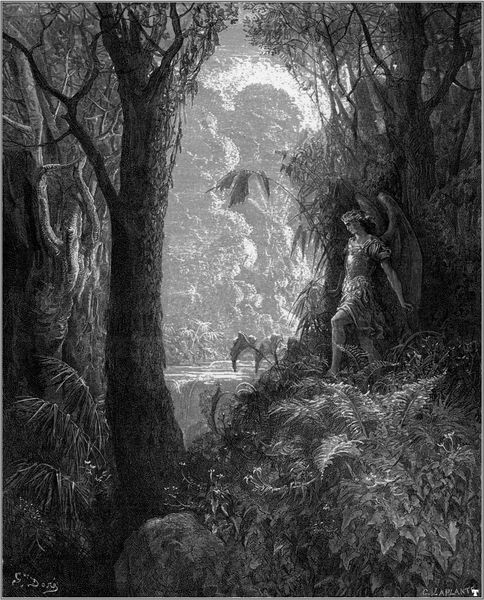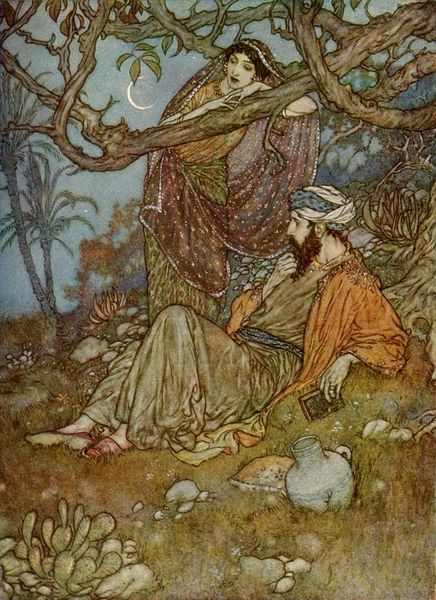
painting, watercolor
#
portrait
#
narrative-art
#
painting
#
figuration
#
oil painting
#
watercolor
#
symbolism
#
genre-painting
#
history-painting
#
pre-raphaelites
#
watercolor
Copyright: Public Domain: Artvee
Curator: Looking at this watercolour painting, "The Voice of the Lord" created between 1896 and 1902 by James Tissot, I’m struck by the overwhelming verticality, aren't you? The sharp rays almost pierce through the canvas. Editor: Yes, there’s a distinct feeling of disruption here. Consider the visual language—that forceful light. It's such a clear, unambiguous depiction of divine intervention, isn’t it? What social anxieties might Tissot be reflecting by presenting power in this way? Curator: Tissot's turn toward biblical scenes after 1885 reflects the religious sentiments that often manifested themselves through artwork toward the end of the 19th century. What's fascinating to me is Tissot’s own process. He travelled to the Middle East to study the settings, architecture, and clothing to inform his representations. Editor: Exactly! And in the painting, we see that very particular engagement with orientalist notions so popular in that era, the setting being highly idealized and dramatized to portray spirituality, even a perceived 'authenticity.' How might this depiction reinforce ideas of the Orient, or the biblical 'past', and how is it displayed to western audiences? Curator: One can definitely perceive a tension, if we acknowledge this image circulated amongst a European and North American bourgeois public seeking to assert themselves. But let's also acknowledge that, as a history painting, "The Voice of the Lord" offers insights into turn-of-the-century anxieties regarding faith and modernity. Editor: Perhaps, but to really unpack Tissot's choices, we also need to investigate this piece through a postcolonial lens. It calls on the viewers to recognize these biases that perpetuate problematic notions regarding religious representation and that is also essential when assessing his broader impact. Curator: Fair enough. Regardless, the sheer expressiveness of the man’s reaction, positioned within this very theatric lighting, surely provokes emotional responses even today. Editor: It certainly offers much for consideration, sparking interesting conversation, as we reflect on his body of work.
Comments
No comments
Be the first to comment and join the conversation on the ultimate creative platform.
